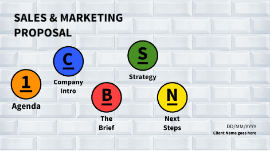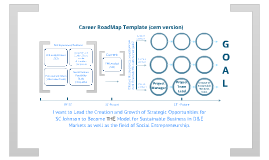Roadmap Presentation
Transcript: Emerging Trends in Testing Roadmaps Technological advancements are revolutionizing testing roadmaps with AI-driven automation, predictive analytics, and dynamic real-time updates for agile testing environments. Recap: Importance of Test Diagram Roadmaps The Future of Test Diagram Roadmaps Test diagram roadmaps play a crucial role in enhancing testing efficiency, ensuring thorough coverage, and facilitating clear communication among team members. Exploring the evolving landscape of testing roadmaps and the cutting-edge trends shaping the future of test diagram roadmaps. Implementing Test Diagram Roadmaps Incorporating Test Diagrams into Testing Processes Incorporating test diagrams into testing processes is essential for efficient and effective testing. Monitoring and adapting test diagram roadmaps ensures alignment with project goals and requirements. Integrating test diagrams helps visualize the testing scope, identify dependencies, and streamline the test design. It enhances communication among team members and ensures comprehensive test coverage. Monitoring and Adapting Test Diagram Roadmaps Regularly monitoring test diagram roadmaps allows for the identification of bottlenecks, gaps, and inconsistencies in the testing process. Adapting the roadmaps based on feedback and changing requirements ensures the effectiveness of the testing strategy. Improving Software Quality Case studies showcasing the direct impact of test diagram roadmaps on the quality and reliability of software products. Streamlining Testing Processes Examining Successful Test Diagram Implementations An in-depth look at how organizations have used test diagram roadmaps to enhance efficiency and accuracy in their testing procedures. Creating a Test Diagram Roadmap Real-world examples of how test diagram roadmaps have streamlined testing processes and improved outcomes for software development projects. Best Practices for Test Diagram Development Developing a strategic and effective test diagram roadmap is crucial for successful testing processes. Every step in the development process plays a significant role in ensuring the accuracy and efficiency of testing procedures. 1. Utilize visual aids and diagrams to enhance clarity. 2. Regularly update and adapt the test diagrams based on feedback. 3. Ensure alignment with overall testing objectives and goals. 4. Collaborate with cross-functional teams for input and insights. Steps to Develop a Test Diagram Roadmap 1. Define the testing objectives and scope. 2. Identify key stakeholders and resources. 3. Map out the testing phases and processes. 4. Establish clear milestones and timelines for testing activities. The Role and Benefits of Roadmaps in Testing Understanding the Role of Roadmaps Roadmaps play a crucial role in guiding testing processes and ensuring alignment with project goals. Understanding the significance of roadmaps in testing is essential for streamlined and effective quality assurance practices. Roadmaps in testing provide a visual representation of the testing process, outlining key milestones and tasks. They serve as a strategic tool to plan, execute, and track testing activities efficiently. Benefits of Using Roadmaps in Testing Utilizing roadmaps in testing enhances communication, fosters collaboration among team members, and improves project visibility. Roadmaps also help in setting clear expectations, prioritizing tasks, and mitigating risks throughout the testing lifecycle. Identifying Resources and Timelines Outlining Testing Strategies The roadmap should clearly identify the required resources, including tools and team members, and establish realistic timelines for each testing phase to maintain project efficiency. Mapping out detailed testing strategies helps in efficiently allocating resources and ensuring comprehensive test coverage across all aspects of the project. Roadmap Presentation Defining Test Objectives Key Elements of a Testing Roadmap Importance of Test Diagrams in Testing Processes Clearly articulating the objectives of the testing process is crucial for aligning the roadmap with business goals and project requirements. Types of Test Diagrams The key elements of a testing roadmap include defining test objectives, outlining testing strategies, and identifying resources and timelines. Test diagrams play a crucial role in enhancing the understanding of complex testing processes, facilitating communication among team members, and identifying test coverage gaps. Common types of test diagrams include flowcharts, state transition diagrams, decision tables, and use case diagrams, each serving a specific purpose in test planning and execution. Definition of Test Diagrams Understanding Test Diagrams Test diagrams are graphical representations that illustrate the flow, dependencies, and interactions of test scenarios and components in a structured manner. Test diagrams are visual representations used in testing to map out processes, scenarios, and relationships.

















